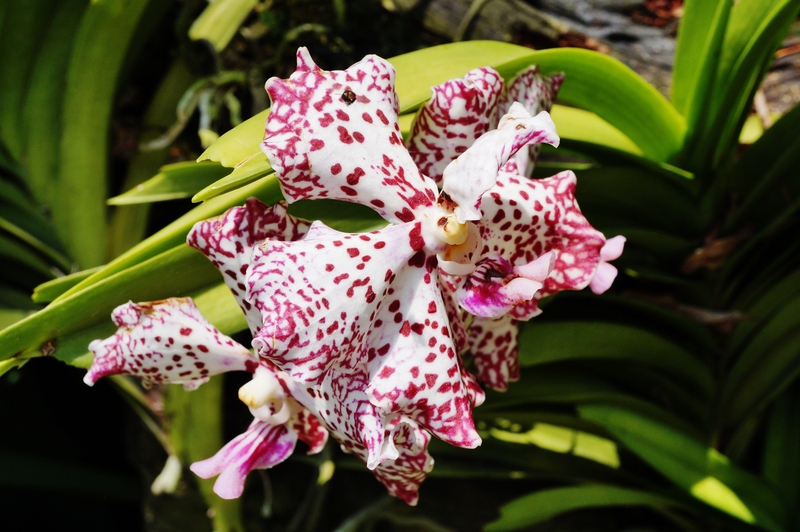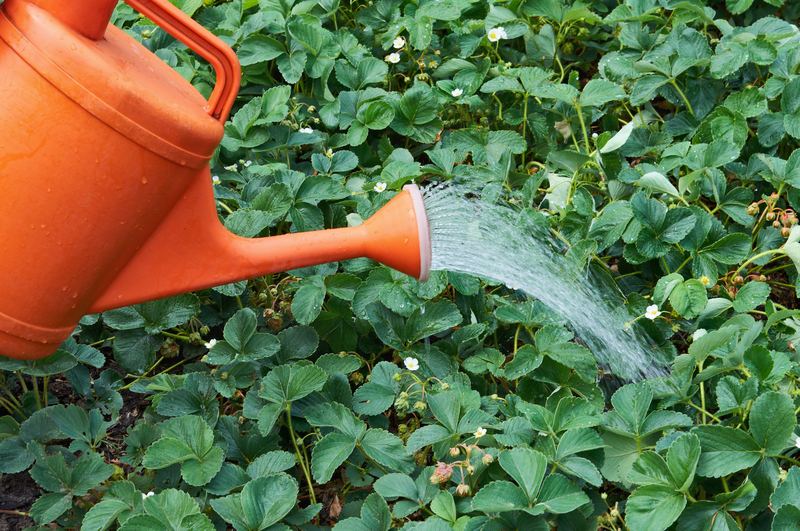Unlocking the Mysteries of Successful Orchid Care
Posted on 20/09/2025
Unlocking the Mysteries of Successful Orchid Care
Orchids are among the most enchanting and popular houseplants worldwide, captivating the admiration of both novice and experienced gardeners. Despite their reputation for being delicate and difficult to maintain, caring for orchids can be straightforward once you understand their unique requirements. In this comprehensive guide, we will unlock the mysteries of successful orchid care by providing actionable tips, proven methods, and fascinating insights to help your orchids flourish all year round.
Understanding Different Types of Orchids
Before delving into the specifics of orchid cultivation, it is essential to familiarize yourself with the vast variety of orchids available, as each type may have unique requirements.
Popular Orchid Varieties
- Phalaenopsis (Moth Orchid): Known for their long-lasting blooms and forgiving nature, these are ideal for beginners.
- Cattleya: Famous for their vibrant, fragrant flowers, they require bright, indirect light.
- Dendrobium: Diverse and adaptable, these orchids need a distinct dry period to thrive.
- Oncidium (Dancing Lady): Recognizable by their petite, dancing blooms and affinity for higher humidity.
- Vanda: Often grown bare root, Vandas appreciate strong air circulation and bright light.
Identifying your orchid type will help you tailor your care regimen, ensuring successful growth and breathtaking blooms.

Key Factors Influencing Orchid Health
To demystify orchid maintenance, it is crucial to understand several environmental and care factors that directly impact plant health and vitality.
Light: The Engine of Orchid Growth
Orchids typically originate from tropical regions, thriving under a canopy of filtered sunlight. The intensity and quality of light they receive can determine the plant's overall well-being.
- Bright, indirect light is optimal for most common varieties like Phalaenopsis and Cattleya.
- Too much direct sunlight can scorch the leaves, causing unsightly burns.
- Conversely, insufficient light results in weak, leggy growth and a lack of blooms.
- East or west-facing windows are preferable; use sheer curtains to diffuse strong sunlight.
Tip: Leaf color is a reliable indicator -- healthy orchids have medium green leaves, while yellowish or dark green may indicate too much or too little light, respectively.
Watering Wisdom: Avoiding Deadly Mistakes
Watering is where many aspiring orchid enthusiasts stumble. Overwatering is a common mistake, as many orchids are epiphytes (plants that grow on trees) and dislike "wet feet."
- Allow the orchid medium to dry out slightly between waterings.
- Check roots and potting media for moisture before watering again.
- Generally, a thorough soak once a week is sufficient for most indoor orchids.
- Use room temperature, distilled, or rainwater for optimal health.
- Never let orchids sit in standing water, as this leads to root rot.
Pro Tip: If unsure, it's safer to under-water than over-water your orchids.
Humidity and Air Circulation
Most orchids prefer a humid environment, resembling their natural habitats.
- Maintain room humidity between 40% and 70%.
- Group plants together or use a humidity tray filled with water and pebbles.
- Regular misting can also help, but avoid wetting the leaves excessively to prevent fungal diseases.
- A gentle fan offers both improved air circulation and a more comfortable climate for your orchids.
Temperature Matters
Orchids generally enjoy temperatures between 60?F (15?C) at night and 80?F (27?C) during the day.
- Warm-growing orchids (like Vandas) prefer higher temperatures and can tolerate a brief hot spell.
- Cool-growing orchids (like Miltoniopsis) need cooler nighttime temperatures for success.
- Avoid sudden temperature fluctuations, which can stress plants and hinder blooming.
Fact: Many orchids need a slight temperature drop at night to trigger flower spikes.
The Orchid Potting Dilemma: Choosing the Right Medium
Orchids naturally cling to trees and other surfaces, preferring air movement around their roots. This makes the choice of potting medium and container one of the secrets to successful orchid care.
Best Potting Mixes for Orchids
- Bark mix: Most popular; offers good drainage and structure.
- Sphagnum moss: Retains moisture -- ideal for drier homes or seedlings.
- Perlite and charcoal: Improve aeration and prevent compaction.
Ensure your orchid pot has plenty of drainage holes. Specialized clear pots allow you to monitor root health and moisture levels.
When and How to Repot Orchids
- Repot every 1-2 years, or when the potting medium breaks down.
- Spring, after blooming, is the ideal time for repotting.
- Trim off any dead or mushy roots and gently spread healthy roots out in the new pot.
- Never bury the entire rhizome -- keep the base at or slightly above the medium.
The Art of Fertilizing Orchids
Fertilization is the key to unlocking robust growth and abundant flowers. However, orchids require only modest feeding to reach their full potential.
- Use a balanced, water-soluble fertilizer (20-20-20 or similar) diluted to quarter strength.
- "Weekly, weakly": Feed your orchids every week during the growing season, but with a very dilute fertilizer solution.
- Flush the pot with clean water once a month to avoid fertilizer salt buildup, which can damage roots.
- Reduce or stop fertilizing during the orchid's dormancy or winter resting period.
Insight: Some experienced orchid growers switch to a bloom-boosting formula (with higher phosphorus content) as flower spikes develop.
Troubleshooting Common Orchid Problems
Even with dedicated orchid plant care, problems may arise. Early intervention is crucial for success.
Root and Leaf Troubles
- Yellowing leaves: Often due to overwatering, poor drainage, or insufficient light. Adjust care accordingly.
- Wrinkled or limp leaves: Typically signal underwatering or root damage.
- Black or mushy roots: Indicate root rot - remove and repot in fresh medium.
- Dry, brown roots: May be a sign of underwatering or exposure to fertilizer salts.
Pests and Diseases
- Mealybugs, scale insects, and spider mites are the most common pests. Remove by hand, wash with insecticidal soap, or treat with horticultural oil.
- Botrytis, leaf spots, and crown rot can develop under overly humid, crowded conditions. Remove infected tissues and ensure ample air movement.
Why Won't My Orchid Bloom?
Failure to bloom frustrates many growers. Potential reasons include:
- Insufficient light
- Lack of nighttime temperature drop
- Infrequent feeding
- Improper repotting or root issues
Patience is key: Most orchids bloom annually, and it can take several months from spike formation to flower.
Advanced Orchid Care Tips
Take your skills to the next level with these advanced tips for optimal orchid cultivation:
- Rotate your orchids: Gradually move them to brighter light to encourage blooming, being cautious to avoid sunburn.
- Monitor roots: Healthy roots are plump and white with green tips. Unhealthy roots can endanger the entire plant.
- Keep a journal: Note watering, fertilizing, and blooming times to track what works best for your collection.
- Experiment with mounting: Advanced growers mount orchids on bark or wood, simulating their epiphytic lifestyle.

The Rewards of Mastering Orchid Care
Unlocking the mysteries of orchid care is more than just a horticultural pursuit. It offers a rewarding journey in patience, observation, and the joys of cultivating exotic beauty in your own home.
- Orchids can bloom for months, bringing lasting color and fragrance indoors.
- Successful care often leads to propagation - growing keikis (baby orchids) and sharing plants with friends and family.
- Caring for orchids can be a meditative hobby, fostering mindfulness and appreciation for the natural world.
As you gain confidence, you may wish to explore rare and wild species, take part in local orchid societies, or even enter your prized plants in competitions.
Conclusion: Orchid Care Made Simple
With these expert strategies, you can unlock the mysteries of successful orchid care and cultivate stunning, healthy orchids year after year. Remember: observe, adapt, and enjoy the process. Even the most mysterious orchids will reveal their secrets when tended with care, patience, and curiosity.
Whether you are nurturing your first Phalaenopsis or a diverse collection of rare species, successful orchid maintenance is within your reach. Happy growing!

